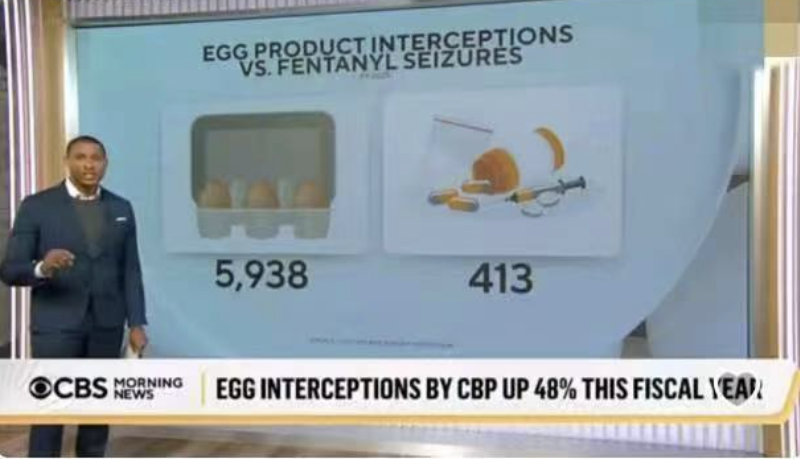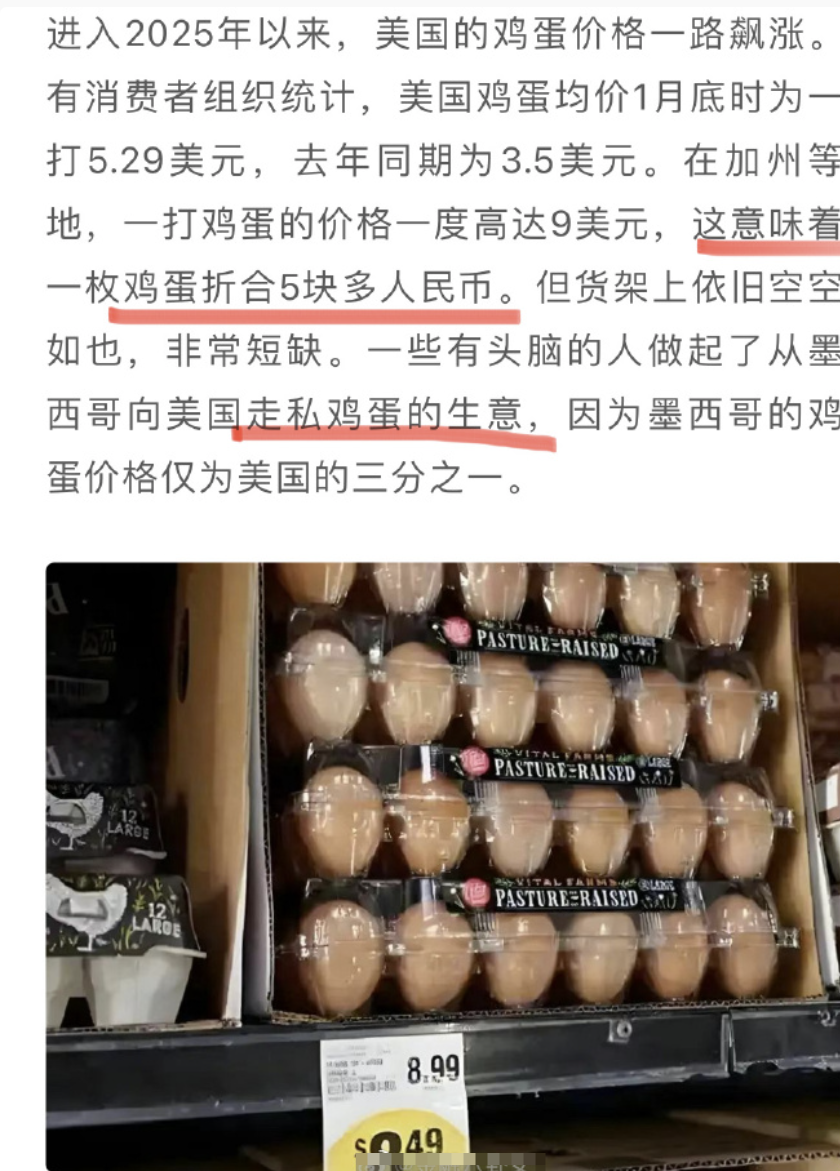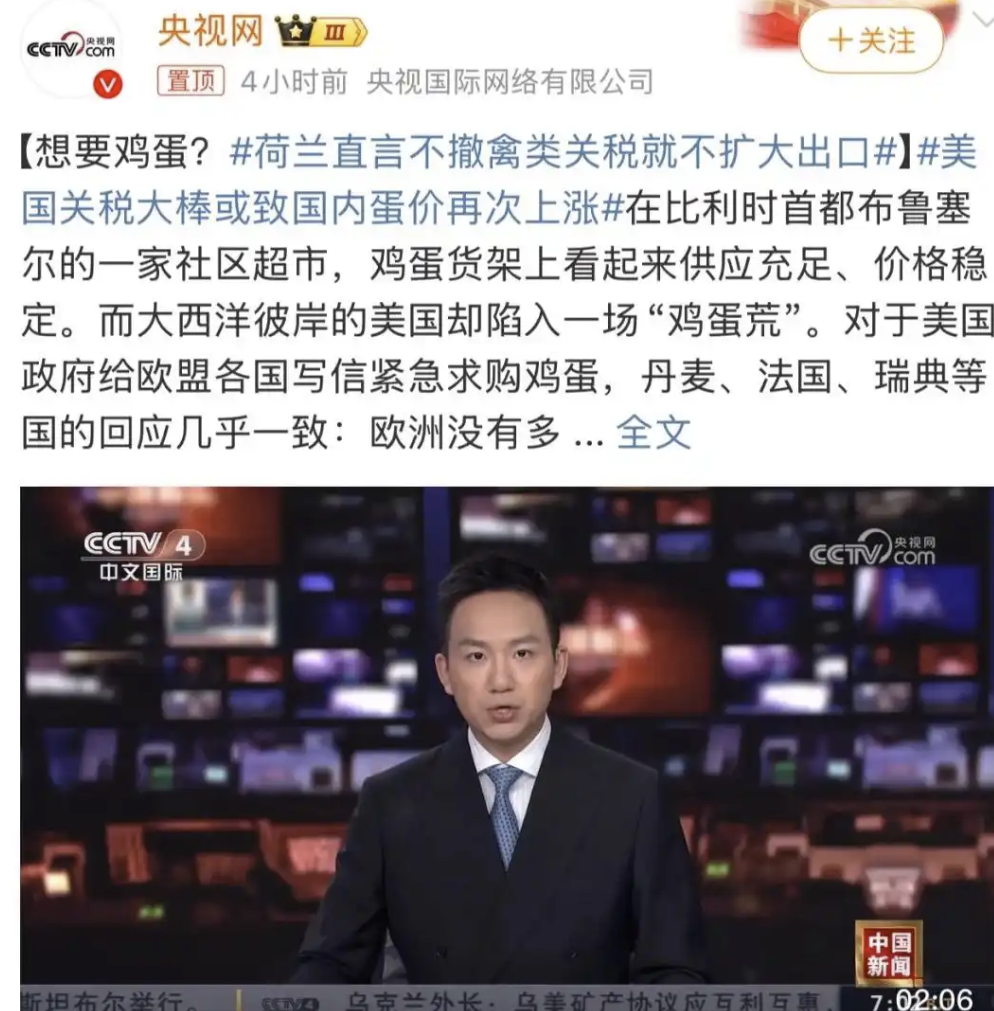html
US-Mexico Border Oddity: Drug Cartels Turn to Egg Smuggling
In a surprising twist of economic fate, the US-Mexico border has become a battleground for a new commodity: eggs. What was once a hub for drug trafficking is now witnessing a dramatic shift in illegal trade, revealing fascinating insights into market dynamics and policy failures.
1. From Drugs to Eggs: The Smuggling Evolution

Recent months have seen a staggering increase in egg smuggling cases at the US-Mexico border, with 5,938 egg-related seizures compared to just 413 drug cases—a 14-fold disparity. Mexican drug cartels are now leveraging their sophisticated smuggling networks to transport eggs into the US, turning a profit in an unexpected market.
2. Black Market Eggs: A New Urban Landscape

With illegal eggs unable to enter supermarkets, street vendors have proliferated in US cities. In California, you might spot vendors selling eggs at $7 per dozen from makeshift stalls, a stark contrast to the regulated market.
3. Price Surge: From $1.5 to $9 Per Dozen

US egg prices soared from $1.5-$2 per dozen in early 2022 to $6-$9 by March 2025, a 300% increase. This compares starkly with Chinese egg prices at approximately $0.08 per egg, highlighting the US market’s vulnerability.
4. Global Supply Chain Disruption: Avian Flu’s Aftermath

The crisis originated from the 2022 global avian flu outbreak, which led to the culling of millions of laying hens in the US. Despite theoretical recovery timelines, rebuilding the flock proved far more complex than anticipated.
5. Monopolistic Market Control

The US egg market is highly concentrated, with the top three producers controlling 60% of capacity and the top six accounting for 87%. These giants have deliberately restricted expansion, maintaining high prices through artificial scarcity.
6. Market Forces at Play
A 10% supply shortage doesn’t equate to a 10% price hike. Market economics dictate that prices must rise until 10% of consumers are priced out, explaining the 300% surge despite a relatively modest supply gap.
7. Government Missteps: Trump’s Tariff Conundrum

The US sought emergency egg imports from the EU but faced rejection. Mexico could supply eggs at $2 per dozen, even with a 25% tariff, but Trump’s 238% punitive tariffs on Mexico and Canada blocked legal imports, exacerbating the crisis.
8. Cartels’ Calculated Risk

Comparing drug vs. egg smuggling:
- Drugs: 250% profit, 30% seizure risk, life imprisonment
- Eggs: 300% profit, 10% seizure risk, minor penalties
Cartels find egg smuggling more lucrative and less risky, with a $1,000 net gain per $400 drone loss.
9. Tech-Enabled Smuggling: Drones Take Flight

Cartels use consumer drones to transport 30-40 eggs per flight, evading radar and border walls. With DJI removing geofencing, smuggling has surged, despite a 10% seizure rate.
10. Economic Lessons in Black Humor
This absurd situation underscores:
- Price gaps over 30% fuel smuggling
- Policy interventions can backfire
- Technology reshapes smuggling models
It’s a microcosm of global resource misallocation when legal trade is stifled.
11. Societal Fallout

Eggs have become a luxury, forcing low-income families to reduce protein intake and fueling food inflation. “Egg protests” have erupted in multiple states, highlighting the crisis’s political dimensions.
12. Future Outlook
The crisis may persist until:
- Trade policies shift (30% likelihood)
- Producers expand (20%)
- Smuggling continues (50%)
This model could extend to other essential goods, normalizing “smuggling economies.”
Conclusion: This tale of eggs and cartels serves as a stark reminder: when policies defy economic logic, markets innovate in unexpected ways. The egg-drug swap epitomizes the complexities of global resource allocation in an interconnected world.
